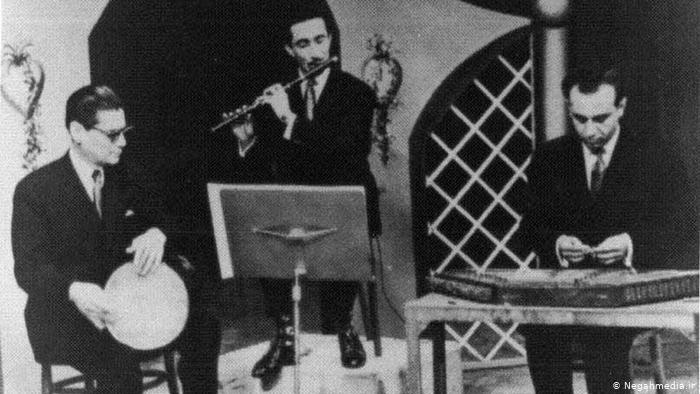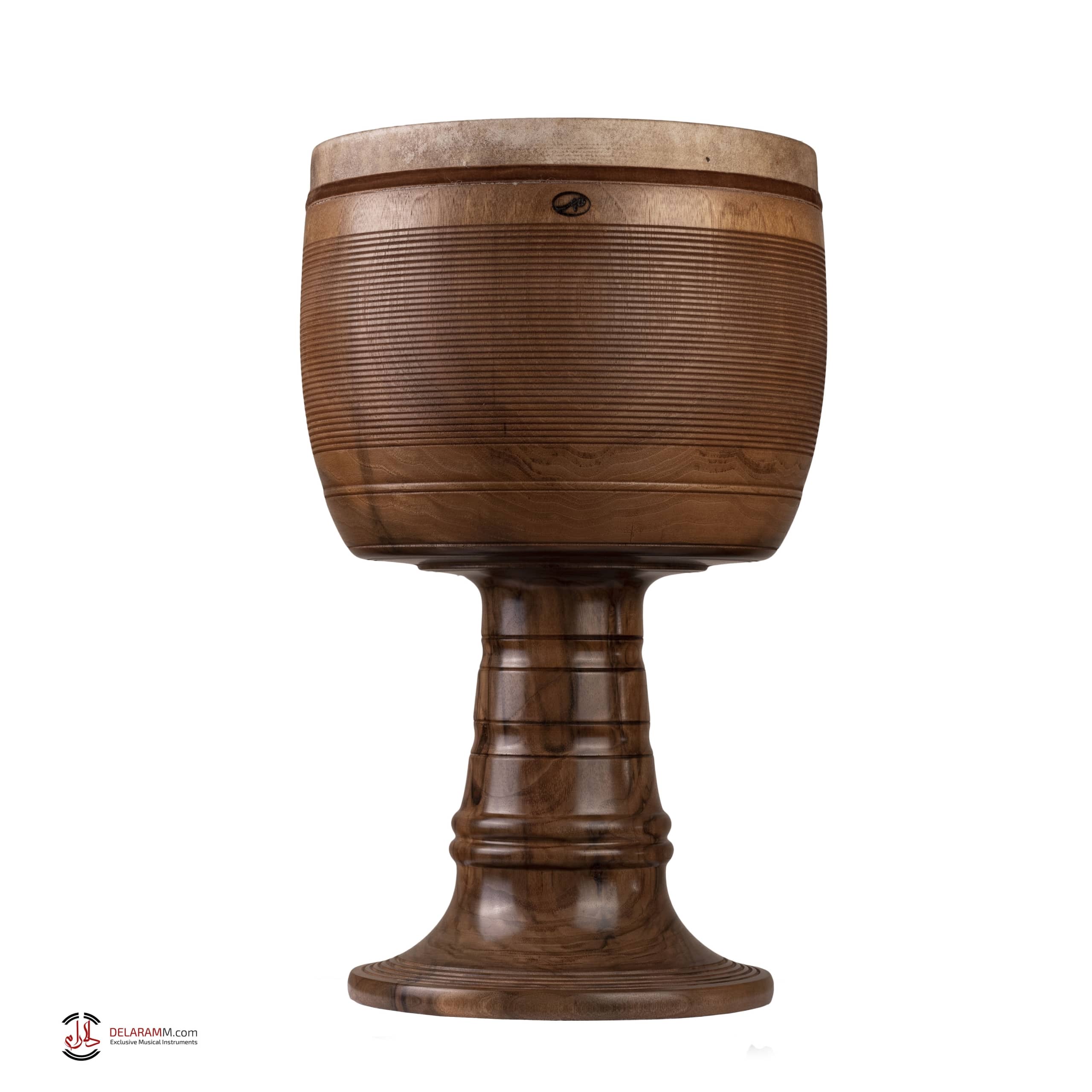The Tonbak: An Enduring Symbol of Persian Musical Heritage
The tonbak, also known as the tombak, is an essential instrument in Persian classical music. This goblet-shaped drum has a storied history and a unique sound that continues to captivate musicians and audiences alike. With an increasing demand for tonbak drums, it is now easier than ever to find a tonbak for sale. Whether it’s a traditional instrument or a modern interpretation, the tombak remains a symbol of Persian cultural heritage.
Origins and Construction of the Tonbak
History and Origin of the Tonbak
The tonbak, also known as the tombak or zarb, is one of the most significant instruments in Persian classical music, celebrated for its deep, resonant sound and intricate playing techniques. The history of the tonbak is intricately tied to the cultural, social, and artistic evolution of Persia (modern-day Iran), where music has always been a vital form of expression.
Ancient Roots
The origins of the tonbak can be traced back thousands of years to ancient Persia, where music played a central role in courtly ceremonies, spiritual practices, and cultural festivities. Historical evidence suggests that early versions of goblet-shaped drums were used in Elamite, Achaemenid, and Sassanid civilizations, dating as far back as 1500 BCE. These drums likely served both ceremonial and entertainment purposes, accompanying storytelling, poetry recitals, and dances.
In ancient Persia, music was closely associated with the divine, and percussion instruments like the tonbak were considered to hold spiritual significance. Drums were often used in rituals to invoke mystical experiences or to synchronize group activities, reflecting the communal nature of Persian culture.
Etymology and Evolution
The word “tonbak” is derived from the Persian words “ton” and “bak”, which mimic the drum’s distinct sounds. These terms reflect the instrument’s dual capability of producing both low bass tones (“ton”) and high-pitched percussive sounds (“bak”). Over time, this name replaced the older term “zarb”, which simply meant “strike” or “hit” in Persian.
The tonbak evolved in its design and role as Persian music developed into a highly sophisticated art form during the Sassanid Empire (224–651 CE). The Sassanid court invested heavily in music, and royal patronage allowed instruments like the tonbak to flourish. The introduction of intricate rhythms during this period likely influenced the tonbak’s playing techniques, which became more complex and nuanced.
Islamic Era Influence
Following the advent of Islam in Persia, music underwent significant changes. While certain conservative interpretations of Islamic teachings restricted musical expression, Persian musicians found ways to preserve and adapt their traditions. The tonbak continued to play a role in Persian classical music, which often accompanied poetry and storytelling. This era saw a refinement in the instrument’s construction and an emphasis on rhythmic intricacy.
During the Islamic Golden Age (8th–13th centuries), Persian music, along with science and literature, flourished. The tonbak was incorporated into ensembles that performed at royal courts and cultural gatherings, where it accompanied stringed instruments such as the tar and setar. This period also marked the spread of Persian music—and the tonbak—to neighboring regions, influencing the development of similar instruments in Central Asia, the Middle East, and North Africa.
Safavid and Qajar Eras
The Safavid (1501–1736) and Qajar (1789–1925) dynasties were pivotal periods in the development of Persian music. The tonbak saw a resurgence in prominence as music became a staple of Persian court life. The Safavid rulers, known for their cultural patronage, encouraged the refinement of Persian classical music, and the tonbak was often featured in royal performances.
The Qajar era further emphasized the artistic importance of music. With the rise of coffeehouses as centers for social gatherings, music became accessible to a broader audience. The tonbak, previously limited to elite circles, found its way into popular performances, accompanying both classical compositions and folk songs.
Modern Developments
In the 20th century, the tonbak underwent significant transformations. With the modernization of Persian classical music, the instrument became a subject of scholarly study and professionalization. Master Hossein Tehrani (1912–1973) is credited with revolutionizing the tonbak’s playing technique and elevating its status as a solo instrument. His innovative approaches expanded the tonbak’s expressive range and introduced it as a centerpiece in Persian music ensembles.
Tehrani’s contributions inspired a new generation of tonbak players, including Nasser Farhangfar and Mohammad Esmaili, who further refined the instrument’s techniques and repertoire. These masters emphasized the tonbak’s rhythmic complexity and its ability to complement both traditional and contemporary music.
The tonbak is one of the oldest drums in Persia, recognized as the national drum of Iran. Its roots trace back thousands of years, evolving alongside the country’s vibrant music traditions. The tonbak’s distinctive goblet shape is key to its unique sound, which can range from deep, resonant bass tones to sharp, percussive strikes.
Table: Historical Timeline of the Tonbak
| Era | Significance |
|---|---|
| Ancient Persia | Early goblet-shaped drums used in ceremonies and storytelling. |
| Sassanid Empire | Refinement of design and playing techniques; integration into royal ensembles. |
| Islamic Golden Age | Spread of Persian music; tonbak gains prominence in court and cultural settings. |
| Safavid Dynasty | Revival of Persian classical music; tonbak featured in royal performances. |
| Qajar Dynasty | Popularization of the tonbak in coffeehouses and public gatherings. |
| 20th Century | Innovations by masters like Hossein Tehrani elevate the tonbak to a solo instrument. |
| Modern Era | Global recognition of the tonbak; integration into world music and fusion genres. |
Materials and Craftsmanship
The body of the tonbak is traditionally carved from hardwoods such as walnut, mulberry, or apricot. These woods are prized for their durability and acoustic qualities, which amplify the drum’s tonal range. The drumhead is typically made from camel or goat skin, though modern versions may incorporate synthetic materials for consistency and durability.
Crafting a tonbak requires meticulous attention to detail. Traditional tonbaks are carved as a single piece, with the goblet shape designed to enhance resonance. The instrument’s surface is polished and lacquered, not only to preserve the wood but also to add an aesthetic sheen. This craftsmanship results in a drum that is as visually striking as it is musically versatile.
Variations in Design
While the classic tonbak is the most recognized, modern adaptations have introduced variations in size, material, and construction techniques. These include lightweight designs for portability and tonbaks with adjustable drumheads to accommodate diverse playing styles and climates.
Role in Persian Classical Music
The tonbak plays an integral role in Persian classical music, where it serves as both a rhythmic foundation and a melodic accompaniment. Unlike many percussion instruments, the tonbak is highly expressive, capable of producing a wide array of sounds and emotions.
Complementary Role
The tonbak’s deep, resonant tones beautifully complement traditional Persian string instruments such as the tar, setar, and kamancheh. Its rhythms enhance the mood and texture of classical compositions, creating a seamless dialogue between melody and rhythm. This symbiotic relationship underscores the tonbak’s importance in Persian ensembles.
Solo Performances
The tonbak is not confined to accompaniment. Over the centuries, it has gained recognition as a solo instrument. Masterful players can use intricate fingerwork, dynamic rhythms, and tonal variations to craft captivating solos that showcase the drum’s full expressive potential.
Unique Playing Technique
One of the defining features of the tonbak is its unique playing technique, which sets it apart from other percussion instruments. The player holds the drum between their knees or places it on their lap. Using a combination of fingers, palms, and wrists, they strike both the drumhead and the body to produce an intricate tapestry of sound.
Fingerwork and Dynamics
Tonbak players employ rapid, precise finger movements to create rhythmic patterns that range from soft, delicate beats to powerful, resonant strikes. Techniques such as rolling, snapping, and tapping allow for an extraordinary level of nuance and expression.
Rhythmic Patterns
The tonbak is known for its complex rhythmic patterns, which are integral to Persian music’s cyclic rhythmic system. These patterns often include syncopation and improvisation, requiring a deep understanding of timing and rhythm.
Versatility in Performance
The tonbak’s design and playing style allow musicians to produce a variety of sounds, from bass tones achieved by striking the center of the drumhead to higher-pitched tones created by tapping the edges. Players may also incorporate the drum’s wooden body to add additional percussive textures.
Modern Interpretations and Adaptations
In recent years, the tombak has gained popularity beyond the borders of Iran, with musicians around the world discovering its unique sound and adaptability. This has led to an increase in tonbak instruments for sale, catering to various skill levels and budgets. Modern interpretations of the tonbak may incorporate new materials and designs, offering an updated take on this ancient instrument. Furthermore, the tombak has found its way into contemporary music genres such as jazz, electronic music, and world fusion, showcasing its versatility and appeal to a wide range of musicians and audiences.
Preserving and Promoting Persian Musical Heritage
The ongoing popularity and adaptation of the tonbak in the global music scene reflect a broader interest in preserving and promoting Persian musical heritage. Learning to play the tonbak offers a connection to Iran’s rich cultural past while also providing a platform for creative expression and collaboration. As more people discover the beauty of the tonbak and its distinctive sound, this ancient instrument will continue to captivate and inspire musicians and listeners alike.
Learning to Play the Tonbak
For those eager to learn the tonbak, a variety of resources are available to suit beginners and advanced players alike.
Choosing the Right Tonbak
When starting out, beginners may opt for a basic tonbak, which is affordable and easy to handle. As they progress, investing in a high-quality tonbak crafted from aged wood can significantly enhance their playing experience.
Educational Resources
- In-person Classes: Many music schools and cultural institutions offer tonbak lessons.
- Online Tutorials: Platforms like YouTube and specialized websites provide step-by-step guides for beginners.
- Books and DVDs: Instructional materials offer detailed insights into tonbak techniques and rhythms.
Frequently Asked Questions (FAQs) About the Tonbak
1. What is the origin of the tonbak?
The tonbak originated in ancient Persia (modern-day Iran) and has been an integral part of Persian music for centuries. It is considered the national drum of Iran.
2. What is the tonbak made of?
The tonbak’s body is traditionally crafted from hardwoods such as walnut, mulberry, or apricot. The drumhead is made of natural materials like goat or camel skin, though modern versions may use synthetic materials for durability and consistency.
3. How is the tonbak played?
The tonbak is played with the fingers and palms, producing a wide range of sounds. Players use intricate techniques like finger rolls, slaps, and taps to create complex rhythms.
4. Who is the most famous tonbak player?
Hossein Tehrani is widely regarded as the most influential tonbak player, credited with elevating the drum to a solo instrument in Persian classical music.
Conclusion
The tonbak is a testament to the richness of Persian musical heritage, combining a history steeped in tradition with the adaptability to thrive in contemporary contexts. Its unique construction, playing technique, and expressive potential make it a standout instrument in Persian classical music and beyond. As the demand for tonbak drums for sale continues to rise, more musicians around the world are discovering its captivating sound and cultural significance.
By learning to play the tonbak, one not only gains a deeper appreciation for Persian music but also contributes to the preservation and evolution of this timeless art form. Whether in its traditional or modern incarnation, the tonbak remains a beacon of creativity and cultural pride, inspiring musicians and audiences for generations to come.



